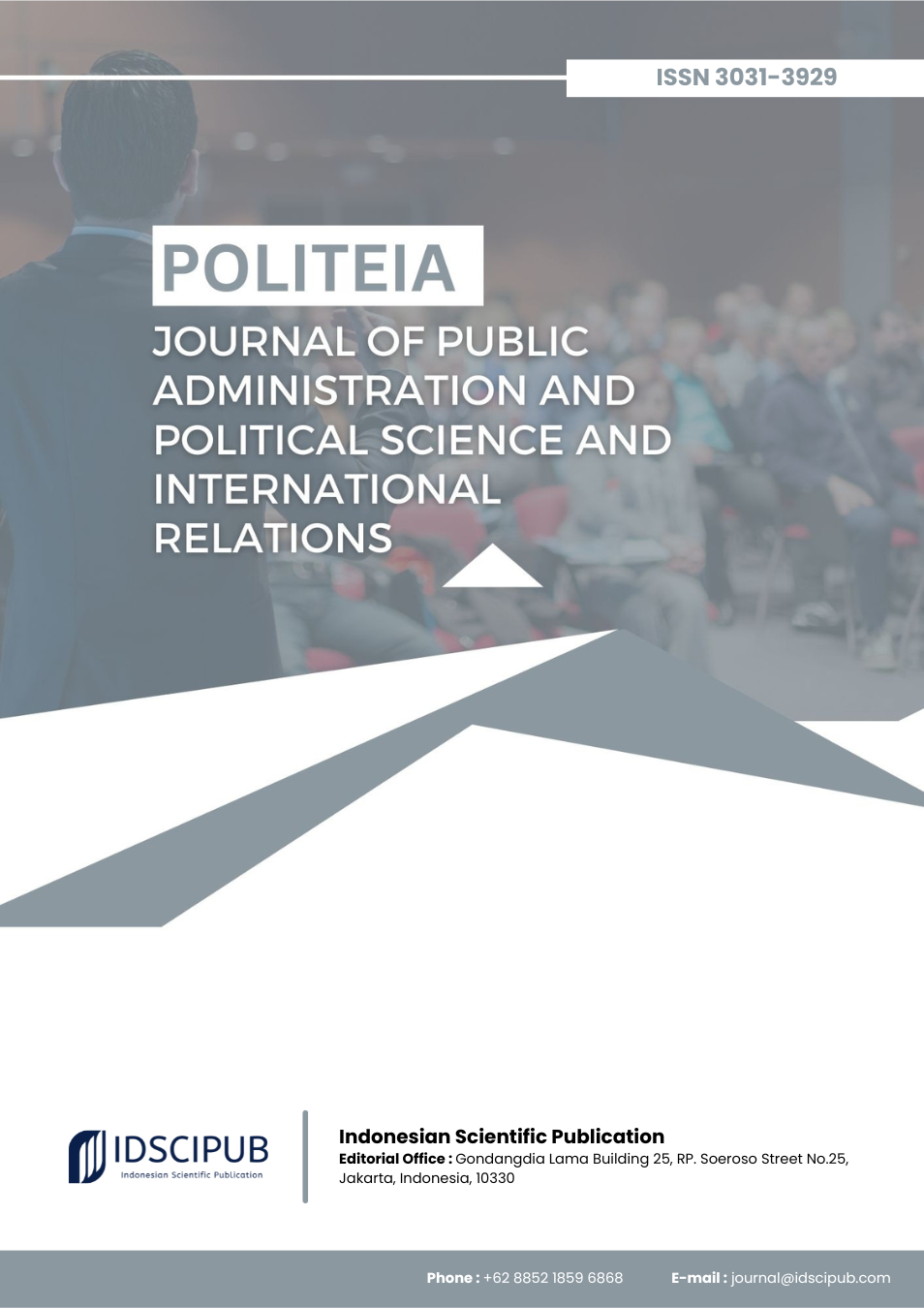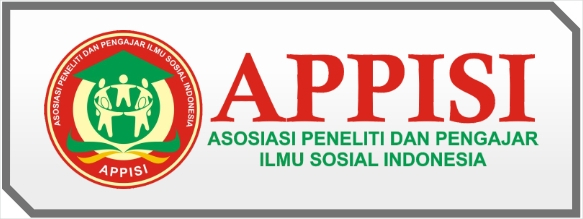Factors Contributing to Stunting in Indonesia: A Review
DOI:
https://doi.org/10.61978/politeia.v2i1.213Keywords:
Stunting, Children, Exclusive Breastfeeding, Premature BirthAbstract
Stunting prevalence in Indonesia has exhibited a relatively consistent trend, with rates of 36.8% in 2007, 35.6% in 2010, and a slight increase to 37.2% in 2013, though showing a decline to 30.8% in 2018. Despite this decrease, Indonesia's stunting rates remain higher than the global prevalence of 22.2%, indicating a significant public health concern. Stunting poses long-term health risks, and early prevention is crucial. This article review aims to identify factors contributing to child stunting in Indonesia, utilizing the WHO's conceptual framework. Employing various study designs and extensive literature search, the review identified 15 relevant articles, highlighting factors like exclusive breastfeeding, household economic status, maternal education, and environmental conditions as key determinants of child stunting.
References
Aguayo, V. M., Nair, R., Badgaiyan, N., & Krishna, V. (2016). Determinants of stunting and poor linear growth in children under 2 years of age in India: An in‐depth analysis of Maharashtra’s comprehensive nutrition survey. Matern. Child Nutr, 12, 121–140. https://doi.org/10.1111/mcn.12259.
Al-Anshori, H., & Nuryanto, N. (2013). Faktor risiko kejadian stunting pada anak usia 12-24 bulan (Studi di Kecamatan Semarang Timur. Diponegoro University. https://doi.org/10.14710/jnc.v2i4.3830
Amin, N. A., & Julia, M. (2016). Faktor sosiodemografi dan tinggi badan orang tua serta hubungannya dengan kejadian stunting pada balita usia 6-23 bulan. J. Gizi dan Diet. Indones. (Indonesian J. Nutr. Diet, 2(3), 170–177. https://doi.org/10.21927/ijnd.2014.2(3).170-177.
Aryastami, N. K. (2017). Kajian Kebijakan dan Penanggulangan Masalah Gizi Stunting di Indonesia. Bul. Penelit. Kesehat, 45(4). https://doi.org/10.22435/bpk.v45i4.7465.233-240.
Aryastami, N. K., Shankar, A., Kusumawardani, N., Besral, B., Jahari, A. B., & Achadi, E. (2017). Low birth weight was the most dominant predictor associated with stunting among children aged 12–23 months in Indonesia. BMC Nutr, 3(1), 1–6. https://doi.org/10.1186/s40795-017-0130-x.
Bardosono, S., Sastroamidjojo, S., & Lukito, W. (2007). Determinants of child malnutrition during the 1999 economic crisis in selected poor areas of Indonesia. Asia Pac. J. Clin. Nutr, 16(3). https://doi.org/10.6133/apjcn.2007.16.3.17
Batiro, B., Demissie, T., Halala, Y., & Anjulo, A. A. (2017). Determinants of stunting among children aged 6-59 months at Kindo Didaye woreda, Wolaita Zone, Southern Ethiopia: Unmatched case control study. PLoS One, 12(12), 189106. https://doi.org/10.1371/journal.pone.0189106.
Beal, T., Tumilowicz, A., Sutrisna, A., Izwardy, D., & Neufeld, L. M. (2018). A review of child stunting determinants in Indonesia. Matern. Child Nutr, 14(4), 12617. https://doi.org/10.1111/mcn.12617.
Budiastutik, I., & Nugraheni, S. A. (2018). Determinants of stunting in Indonesia: A review article. Int. J. Heal. Res, 1(1), 2620–5580. http://www.journal2.uad.ac.id/index.php/ijhr/article/view/753
Calkins, K., & Devaskar, S. U. (2011). Fetal origins of adult disease. Curr. Probl. Pediatr. Adolesc. Health Care, 41(6), 158–176. https://doi.org/10.1016/j.cppeds.2011.01.001.
Hwalla, N. (2017). The prevalence of micronutrient deficiencies and inadequacies in the Middle East and approaches to interventions. Nutrients, 9(3), 229. https://doi.org/10.3390/nu9030229.
Illahi, R. K. (2017). Hubungan pendapatan keluarga, berat lahir, dan panjang lahir dengan kejadian stunting balita 24-59 bulan di Bangkalan. J. Manaj. Kesehat. yayasan RS. Dr. Soetomo, 3(1), 1–7. https://doi.org/10.29241/jmk.v3i1.85.
Illahi, R. K., & Muniroh, L. (2016). Gambaran Sosio Budaya Gizi Etnik Madura Dan Kejadian Stunting Balita Usia 24–59 Bulan Di Bangkalan. Media Gizi Indones, 11(2), 135–143. https://doi.org/10.20473/mgi.v11i2.135-143
Isnaini, F. (2014). Faktor dominan penyebab stunting anak usia 12-23 bulan di Posyandu Terpilih Kelurahan Depok. Univ. Indones. https://lib.ui.ac.id/detail?id=20386556&lokasi=lokal
Keats, E. C., Imdad, A., Das, J. K., & Bhutta, Z. A. (2018). PROTOCOL: Efficacy and effectiveness of micronutrient supplementation and fortification interventions on the health and nutritional status of children under‐five in low and middle‐income countries: a systematic review. Campbell Syst. Rev, 14(1), 1. https://doi.org/doi: https://doi.org/10.1002%2FCL2.196.
Krebs, N. F. (2013). Update on zinc deficiency and excess in clinical pediatric practice. Ann. Nutr. Metab, 62(Suppl. 1), 19–29. https://doi.org/10.1159/000348261.
Kusudaryati, D. P. D., Muis, S. F., & Widajanti, L. (2017). Pengaruh suplementasi Zn terhadap perubahan indeks TB/U anak stunted usia 24-36 bulan. J. Gizi Indones. (The Indones. J. Nutr, 5(2), 98–104. https://doi.org/10.14710/jgi.5.2.98-104.
Morris, S. S., Cogill, B., & Uauy, R. (2008). Effective international action against undernutrition: why has it proven so difficult and what can be done to accelerate progress? Lancet, 371(9612), 608–621. https://doi.org/10.1016/S0140-6736(07)61695-X.
Nadiyah, N., Briawan, D., & Martianto, D. (2014). Faktor risiko stunting pada anak usia 0—23 bulan di Provinsi Bali, Jawa Barat, dan Nusa Tenggara Timur. J. gizi dan pangan, 9(2). https://doi.org/10.25182/jgp.2014.9.2.
Nkurunziza, S., Meessen, B., Geertruyden, J.-P., & Korachais, C. (2017). Determinants of stunting and severe stunting among Burundian children aged 6-23 months: evidence from a national cross-sectional household survey, 2014. BMC Pediatr, 17, 1–14. https://doi.org/10.1186/s12887-017-0929-2.
Onis, A. W. O., Borghi, E., Garza, C., Yang, H., & Group, W. H. O. M. G. R. S. (2006). Comparison of the World Health Organization (WHO) Child Growth Standards and the National Center for Health Statistics/WHO international growth reference: implications for child health programmes. Public Health Nutr, 9(7), 942–947. https://doi.org/10.1017/PHN20062005.
Onis, M. (2015). 4.1 The WHO child growth standards. Pediatr. Nutr. Pract, 113, 278–294. https://doi.org/10.1159/000360352.
Onis, M. B., & Borghi, E. (2012). Prevalence and trends of stunting among pre-school children, 1990–2020. Public Health Nutr, 15(1), 142–148. https://doi.org/10.1017/S1368980011001315.
Paramashanti, B. A., Hadi, H., & Gunawan, I. M. A. (2016). Pemberian ASI eksklusif tidak berhubungan dengan stunting pada anak usia 6–23 bulan di Indonesia. J. Gizi dan Diet. Indones. (Indonesian J. Nutr. Diet, 3(3), 162–174. https://doi.org/10.21927/ijnd.2015.3(3).162-174.
Rachmi, C. N., Agho, K. E., Li, M., & Baur, L. A. (2016). Stunting, underweight and overweight in children aged 2.0–4.9 years in Indonesia: prevalence trends and associated risk factors. PLoS One, 11(5), 154756. https://doi.org/10.1371/journal.pone.0154756.
Rahayu, A., Yulidasari, F., Putri, A. O., & Rahman, F. (2015). Riwayat berat badan lahir dengan kejadian stunting pada anak usia bawah dua tahun. Kesmas J. Kesehat. Masy. Nas. (National Public Heal. Journal, 10(2), 67–73. https://doi.org/10.21109/kesmas.v10i2.882.
Rahman, M. S., Mondal, M. N. I., Islam, M. R., Ahmed, K. M., Karim, M. R., & Alam, M. S. (2015). Under weightiness among ever-married non-pregnant women in Bangladesh: a population based study. Univ J Food Nutr Sci, 3(2), 29–36. https://doi.org/10.13189/UJFNS.2015.030202.
Reyes, H. (2004). The family as a determinant of stunting in children living in conditions of extreme poverty: a case-control study. BMC Public Health, 4(1), 1–10. https://doi.org/10.1186/1471-2458-4-57.
Riskesdas, R. I. (2013). Riset Kesehatan Dasar. Jakarta Kemenkes RI.
Sadad, A., Pauzi, P., Palyama, F. N. S., Nurhasanah, N., Ompusunggu, T. P., Anugrah, G. T., Fauzi, S., Mizam, I. M., Wati, I. K., & Cesilia, R. F. (2022). Inovasi Mahasiswa Kukerta Unri 2022 Dalam Pencegahan Stunting Dan Edukasi Hidup Sehat Di Desa Sumber Sari Tapung Hulu Kampar". Journal of Comprehensive Science (JCS, 1(3), 356–364.
Saranani, S., Noviati, N., Pongdatu, M., Iqbah, I. P., Aini, I. N., Rohman, A., & Useng, Y. (2023). Pencegahan Stunting Melalui Intervensi Gizi Spesifik Pemberian Nugget Ikan Kelor dan Telur di Desa Torobulu Kabupaten Konawe Selatan". Jurnal Mandala Pengabdian Masyarakat, 4(1), 273–279. https://doi.org/10.35311/jmpm.v4i1.244
Saraswati, E., & Budiman, B. (1999). Dampak Suplementasi Makanan Berkalsium terhadap Pertumbuhan Tulang Anak Umur 9-11 Bulan. Penelit. Gizi dan Makanan (The J. Nutr. Food Res. https://doi.org/10.22435/pgm.v0i0.1522.
Sari, M. (2010). Higher household expenditure on animal-source and nongrain foods lowers the risk of stunting among children 0–59 months old in Indonesia: implications of rising food prices. J. Nutr, 140(1), 195 –200. https://doi.org/10.3945/jn.109.110858.
Torlesse, H., Cronin, A. A., Sebayang, S. K., & Nandy, R. (2016). Determinants of stunting in Indonesian children: evidence from a cross-sectional survey indicate a prominent role for the water, sanitation and hygiene sector in stunting reduction. BMC Public Health, 16(1), 1–11. https://doi.org/10.1186/s12889-016-3339-8.
Vollmer, S., Harttgen, K., Subramanyam, M. A., Finlay, J., Klasen, S., & Subramanian, S. V. (2014). Association between economic growth and early childhood undernutrition: evidence from 121 Demographic and Health Surveys from 36 low-income and middle-income countries. Lancet Glob. Heal, 2(4), 225– 234. https://doi.org/10.1016/S2214-109X(14)70025-7.






